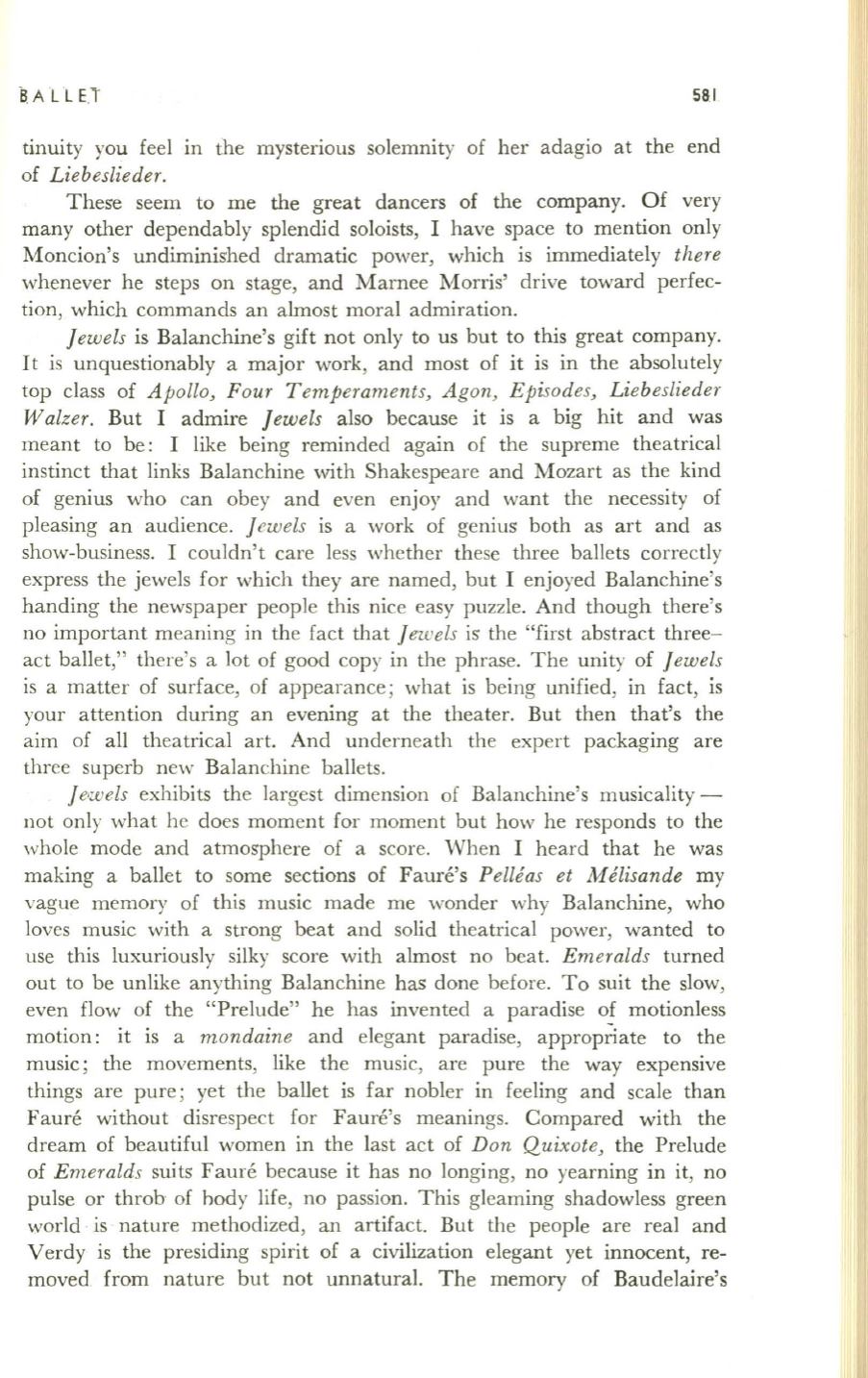
6A
LLEi
5&1
tinuity you feel in the mysterious solemnity of her adagio at the end
of
Liebeslieder.
These seem to me the great dancers of the company. Of very
many other dependably splendid soloists, I have space to mention only
Moncion's undiminished dramatic power, which is immediately
there
whenever he steps on stage, and Marnee Morris' drive toward perfec–
tion, which commands an almost moral admiration.
Jewels
is Balanchine's gift not only to us but to this great company.
It
is unquestionably a major work, and most of it is in the absolutely
top class of
Apollo, Four T emperaments, Agon, Episodes, Liebeslieder
Walzer.
But I admire
Jewels
also because it is a big hit and was
meant to be: I like being reminded again of the supreme theatrical
instinct that links Balanchine with Shakespeare and Mozart as the kind
of genius who can obey and even enjoy and want the necessity of
pleasing an audience.
Jewels
is a work of genius both as art and as
show-business. I couldn't care less whether these three ballets correctly
express the jewels for which they are named, but I enjoyed Balanchine's
handing the newspaper people this nice easy puzzle. And though there's
no important meaning in the fact that
Jewels
is the "first abstract three–
act ballet," there's a lot of good copy in the phrase. The unity of
Jewels
is a matter of surface, of appearance; what is being unified, in fact, is
your attention during an evening at the theater. But then that's the
aim of all theatrical art. And underneath the expert packaging are
three superb new Balanchine ballets.
Jewels
exhibits the largest dimension of Balanchine's musicality–
not only what he does moment for moment but how he responds to the
whole mode and atmosphere of a score. When I heard that he was
making a ballet to some sections of
Faun~'s
Pelteas et Melisande
my
vague memory of this music made me wonder why Balanchine, who
loves music with a strong beat and solid theatrical power, wanted to
use this luxuriously silky score with almost no beat.
Emeralds
turned
out to be unlike anything Balanchine has done before. To suit the slow,
even flow of the "Prelude" he has invented a paradise of motionless
motion: it is a
mondaine
and elegant paradise, appropriate to the
music; the movements, like the music, are pure the way expensive
things are pure ; yet the ballet is far nobler in feeling and scale than
Faure without disrespect for Faure's meanings. Compared with the
dream of beautiful women in the last act of
Don Quixote,
the Prelude
of
Emeralds
suits Faure because it has no longing, no yearning in it, no
pulse or throb of hody life, no passion. This gleaming shadowless green
world · is nature methodized, an artifact. But the people are real and
Verdy is the presiding spirit of a civilization elegant yet innocent, re–
moved from nature but not unnatural. The memory of Baudelaire's


